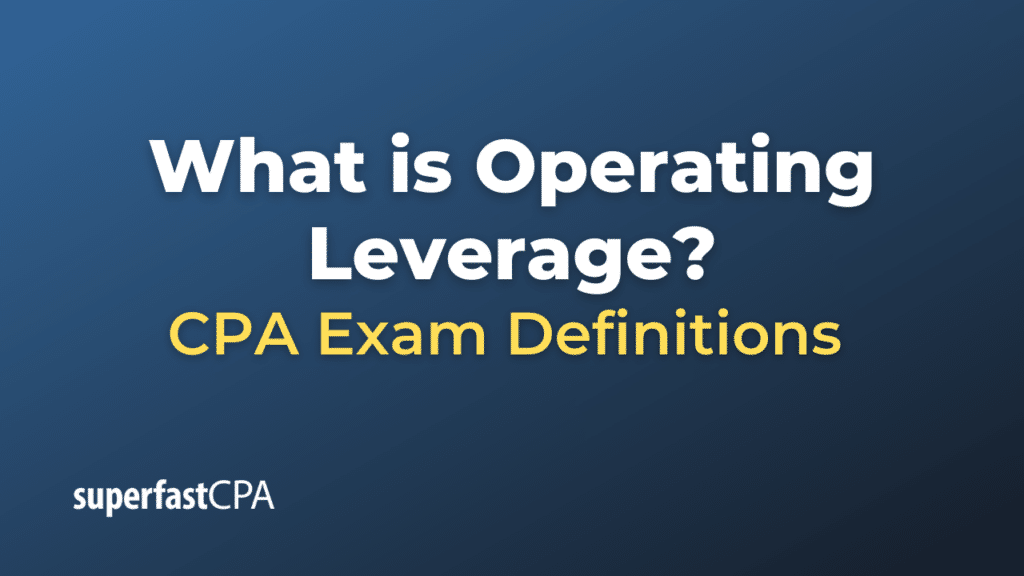Operating Leverage
Operating leverage refers to the percentage of fixed costs that a company has. It measures a company’s fixed costs as a percentage of its total costs (fixed and variable). It is used to evaluate the breakeven point of a business, the risk, and the potential profitability.
Companies with high operating leverage rely more on sales volume for profits. They have a large proportion of fixed costs and small variable costs. These companies will see a faster growth in profits with an increase in sales volume. However, during downturns, these companies will also see a faster decrease in profits.
On the other hand, companies with low operating leverage have a smaller proportion of fixed costs and higher variable costs. Their profits do not increase as quickly with increases in sales volume, but they also do not decrease as quickly during downturns.
The degree of operating leverage can be calculated using the following formula:
Degree of Operating Leverage = Contribution Margin / Operating Income
Where:
- Contribution Margin = Sales Revenue – Variable Costs
- Operating Income = Contribution Margin – Fixed Costs
A high degree of operating leverage indicates that a company has a large amount of fixed costs relative to its variable costs, while a low degree of operating leverage indicates that a company has a large amount of variable costs relative to its fixed costs.
Please note that having a high or low operating leverage is not inherently good or bad. It depends on the company’s business model and strategic goals.
Example of Operating Leverage
Let’s consider a hypothetical software company, TechCo, as an example:
TechCo sells a software product and has the following cost structure for a particular period:
- Sales Revenue: $1,000,000
- Variable Costs: $200,000
- Fixed Costs: $600,000
First, let’s calculate the Contribution Margin:
Contribution Margin = Sales Revenue – Variable Costs
Contribution Margin = $1,000,000 – $200,000
Contribution Margin = $800,000
Then, calculate the Operating Income:
Operating Income = Contribution Margin – Fixed Costs
Operating Income = $800,000 – $600,000
Operating Income = $200,000
Finally, we can calculate the Degree of Operating Leverage:
Degree of Operating Leverage = Contribution Margin / Operating Income
Degree of Operating Leverage = $800,000 / $200,000
Degree of Operating Leverage = 4
A degree of operating leverage of 4 means that for each 1% increase in sales revenue, operating income would increase by 4%. So, if TechCo increased sales revenue by 10%, the operating income would increase by 40% (4 * 10%).
This is a simplified example and in the real world, business scenarios can be more complex. Nevertheless, this demonstrates how operating leverage works: businesses with high fixed costs (and thus high operating leverage) can see more substantial increases in profits from a sales increase compared to businesses with lower operating leverage. However, they are also more exposed to decreases in profit if sales decline.













